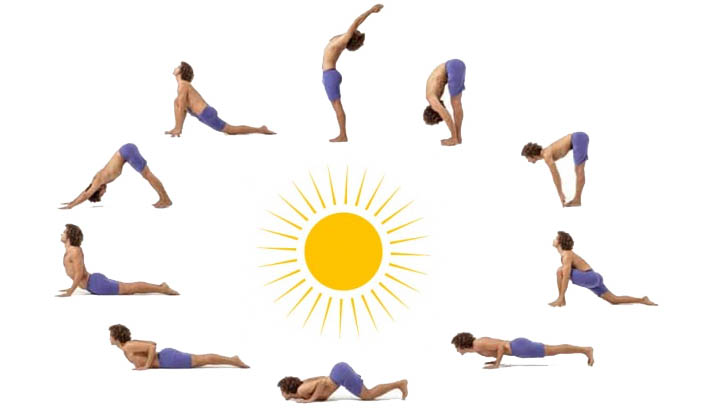10-12 rounds of Suryanamaskar (Sun Salutation), a dynamic series of 12 poses, is equivalent to half-hour of brisk walking
Asanas for Diabetes Prevention and management highlighted

11 September 2024; Ras Al Khaimah, UAE– RAK Hospital’s Diabeat Webinar Series, part of the RAK Diabetes Challenge 2024, successfully hosted its fourth session today, titled “Yoga for Managing Diabetes.” The webinar featured Ms. Zareena Kennedy Ali, a respected Yogacharya specializing in Ashtanga Yoga.
Ms. Zareena Kennedy Ali led an engaging and informative session on the benefits of yoga in managing diabetes. As an expert in Ashtanga Yoga—a traditional form practiced in India—Ms. Zareena provided attendees with valuable insights into how yoga can support diabetes management and overall health.
Ms. Zareena began by explaining the impact of diabetes, a condition resulting from imbalances in the hormones Glucagon and Insulin, leading to elevated blood sugar levels. This condition affects the entire body by damaging both macrovascular and microvascular systems, impacting vital organs and tissues.
She then introduced the attendees to the eight limbs of Ashtanga Yoga: Yama (morality & ethics), Niyama (self-discipline), Asana (postures), Pranayama (breath control), Pratyahara (withdrawal), Dharana (concentration), Dhyana (meditation), and Samadhi (enlightenment). Ms. Zareena emphasized the significance of Asanas and Pranayama in managing diabetes effectively.
Ms. Zareena highlighted a dynamic series of 12 asanas or poses, known as the Suryanamaskar (Sun Salutation), which is typically used as a warm-up for a yoga session. This sequence of postures is performed continuously, one after the other, and can be adapted for both beginners and experienced practitioners. Beginners may start with one or two rounds, while experienced practitioners often complete 10 or more rounds. Each round of Suryanamaskar burns approximately 15 calories, and completing 10-12 rounds is roughly equivalent to a half hour of brisk walking. This series strengthens the heart and lungs, improves blood circulation, and benefits all joints, muscles, and glands. It is often regarded as the complete or ultimate asana.
In addition to the Suryanamaskar, Ms. Zareena recommended incorporating specific asanas on alternate days, with walking as an alternate day activity. This approach not only benefits diabetes management but also supports overall body health. She suggested performing each asana twice, holding each position for 10 seconds, and resting for 30-60 seconds before moving to the next pose. For beginners, attending a yoga session with a master is advisable to ensure proper technique and understanding.
Asanas to benefit Diabetics:
- Ardhalasana (Leg Raises): Strengthens the abdomen, hips, and reproductive organs.
- Sarbhangasana (Shoulder Stand): Benefits the thyroid glands, brain, and hormonal balance.
- Halasana (Plough Pose): Supports the spine, nervous system, thyroid, abdomen, kidneys, and adrenal glands.
- Matsyasana (Fish Pose): Enhances the chest, thyroid, lungs, spine, and neck.
- Bhujangasana (Cobra Pose): Strengthens the spine, heart, lungs, abdomen, arms, and shoulders.
- Salabhasana (Mantis Pose): Improves the lower back, abdomen, hips, and legs.
- Dhanurasana (Bow Pose): Benefits the spine, abdomen, solar plexus, and lungs.
- Naukasana (Boat Pose): Strengthens the abdomen, thighs, and digestive and reproductive organs.
- Bakrasana (Spinal Twist): Aids the spine, kidneys, adrenal glands, pancreas, and digestive system.
- Paschimattasana (Toe Touch): Benefits the spine, abdomen, leg muscles, digestion, kidneys, adrenal glands, and pancreas.
- Shavasana (Corpse Pose): Promotes relaxation of the body and mind.
- Anulom Vilom Pranayama (Alternate Nostril Breathing): Purifies the blood, supports lung function, and helps manage stress and asthma.
Ms. Zareena concluded the session by emphasizing that yoga should be a practice of relaxation and balance rather than physical strain. She encouraged participants to integrate yoga into their daily routines as a pleasurable and accessible way to maintain health and prevent disease.
The Diabeat Webinar Series continues to provide valuable insights and practical strategies for managing diabetes through lifestyle changes. For more information about the RAK Diabetes Challenge 2024, on the Diabeat series and to view past webinars, visit www.rakdiabeteschallenge.com














